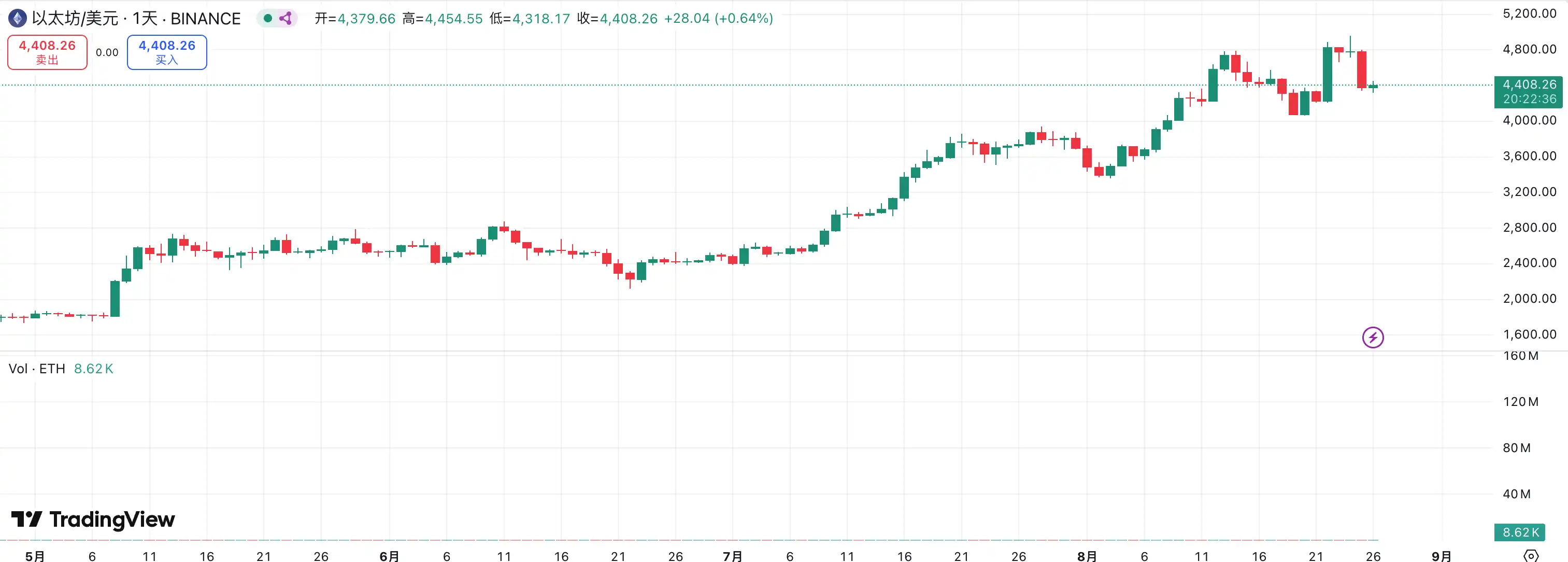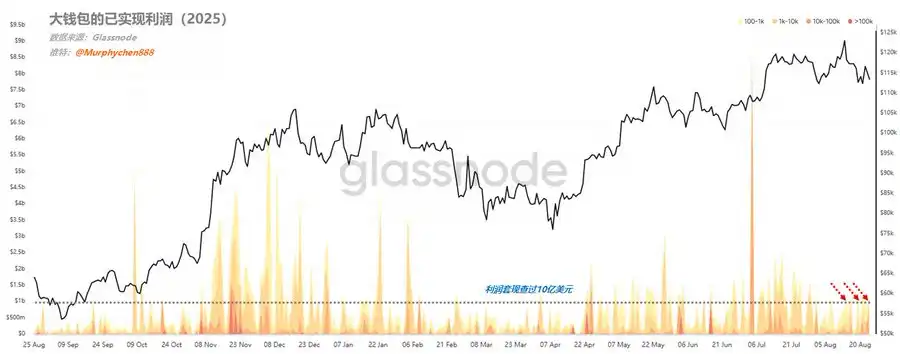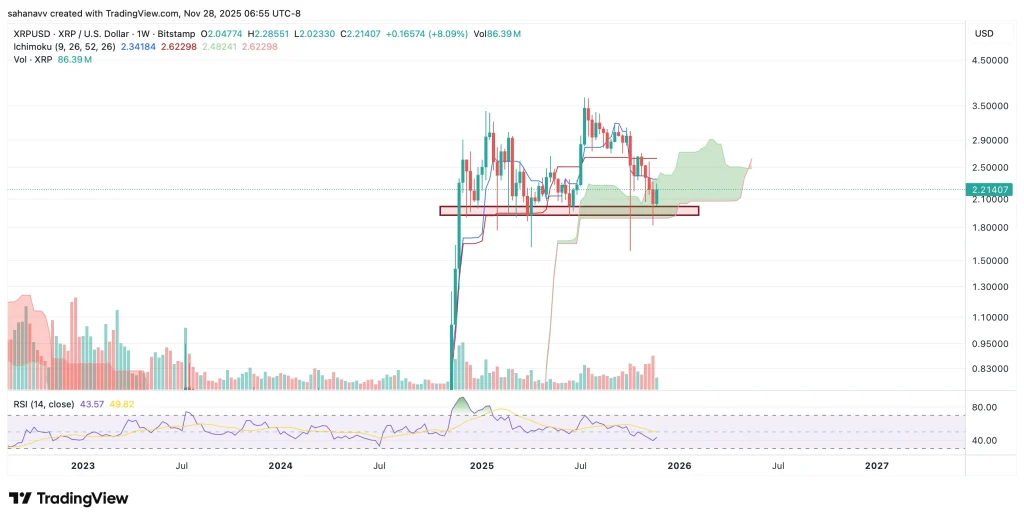Sharp Correction After All-Time High: Is the Market Still in a Bullish Trend? | Trader's Observation
The market has once again experienced a "door painting" trend, with significant differences between long and short traders.
At the Jackson Hole Global Central Bank Annual Meeting, Federal Reserve Chairman Powell sent a clear dovish signal. The market reacted swiftly: ETH briefly broke through $5,000, setting a new all-time high, and the S&P 500 ended its previous five-day losing streak, rebounding 1.5% in a single day, just a step away from its historical peak.
However, this brief euphoria was quickly overshadowed by new concerns. The emergence of the US "recession theory," the PCE price index, and Nvidia's earnings report, among other uncertainties, made the high market sentiment sensitive again, risk appetite cooled rapidly, and the trend turned back to a correction. Currently, BTC has fallen below $110,000, and ETH dropped 8% in a single day to $4,400.

Next, BlockBeats has compiled traders' views on the upcoming market situation to provide some directional reference for your trades this week.
I believe we are in the "final round" of the long bull cycle that began in January 2023. This kind of phase usually doesn't last long, probably just a month or two. Now, almost all marginal buyers globally have entered the market, incremental funds in the crypto market have been fully absorbed, and both BTC and ETH have hit new all-time highs.
The mid- to long-term target I previously set for ETH/BTC at 0.04 has been reached, which for me means the main trading opportunity for ETH is basically over.
This also determines my strategy shift—I will no longer take aggressive offensive strategies with large positions. Next, my focus will shift from "capital accumulation" to "capital preservation." I might miss out on the crazy rallies that may follow, but that's okay, because that doesn't fit my trading system.
This does not mean I have liquidated my positions or turned bearish. On the contrary, I still hold long positions, but with significantly reduced size. I will continue to monitor the mNAV of DAT as a core indicator. When this cycle ends, most DATs' mNAV will fall below 1.
I believe the market at the end of the year will most likely be higher than now. As long as you are not leveraged, there is no need to worry too much about short-term fluctuations—even if there is another 15%-20% drop this week, if you have spare cash, this is actually a good opportunity to add positions. I am almost certain that before the end of the year we will see "money printing," bitcoin may surge to $250,000, and ETH may break through $10,000. Once ETH breaks its all-time high, the upside will be completely open, and I even think $10,000 to $20,000 is a reasonable range.
The core logic here is: digital asset treasury companies are continuously raising funds. As long as the assets they buy keep hitting new highs, the fundraising process becomes easier, and funds will keep pushing up prices, forming a positive feedback loop. There are two key variables behind this—how much these companies can raise, and how much liquidity the government will release. I am not someone who sticks to the "bitcoin four-year cycle" theory; the length of this round largely depends on the game between capital and policy.
Currently, the Trump administration has not fully entered the "money printing mode." They are more like testing the waters—throwing out various ideas, testing which ones can really be implemented, while sending signals that "we want to heat up the economy." When the candidates for Federal Reserve Chairman and the Board of Governors are settled, such as whether Trump can replace Powell and appoint his own people, the pace will become clear, which is expected to be around mid-next year.
Once the personnel arrangements are completed, from mid-2026 to the end of Trump's term will be the craziest phase of monetary easing. Because without printing money, it is impossible to win the election. The Democrats will print, the Republicans will have to print, everyone will use liquidity to please their supporters and interest groups.
As for treasury companies, by then some may be acquired due to valuation discounts or directly liquidate their assets. Leading projects will passively absorb capital and become winners; laggards will be eliminated. But this real "industry reshuffle" may still take some time to arrive.
Bitcoin and Ethereum saw a sharp correction today, with various explanations
Some say it's due to exchanges dumping, some say whales are running away, some say NVDA's earnings this week may miss expectations, some say it's because Trump claimed he could "destroy" China's economy, and some say Moody's and some economists' new reports claim the US is on the verge of recession.
Other reasons are unlikely to cause long-term widespread impact. The recession theory can be discussed a bit more, as there are many and complex economic signals.
Personally, I think traditional economists are likely to once again overlook the "non-traditional" key factor of the AI revolution, which is reshaping the economic landscape. If we must talk about recessionary pressure, a more appropriate description might be: the US economy is currently in a unique period shaped by both cyclical pressures (as shown by the LEI leading economic index) and new structural drivers (such as the AI revolution). Recession risk does exist and cannot be ignored, but the accelerated development of AI is the decisive factor for the economy. The current situation is more like a "gear shift" in economic structural transformation, rather than a simple cyclical recession.
According to research estimates from major institutions, even under pessimistic expectations, generative AI may trigger a "massive labor productivity boom" in the next one to three years, potentially adding trillions of dollars to global GDP. The huge investment in AI explains why, despite many warning signals, hard economic data remains resilient. Similarly, most views predicting a US stock market crash have not taken the AI factor into account.
The conclusion is: there will be growing pains, there will be corrections in the bull market, there will not be a recession, the bear market is not here yet, the bull is still running!
My definition of a bear market is: major participants in the market have completely lost confidence in the future. This can be seen from the behavior of large holders.
To use an analogy, in November 2021, large holders in the market (holding 100-100,000 BTC) frequently and continuously took profits, with a scale exceeding $2 billions. But now, even though BTC has set a new all-time high of $120,000, the largest profit-taking scale by large holders is less than $1 billions. This is completely different from the second peak period in 2021.
In terms of chip structure, when the price reached $65,000 in 2021, a large number of cheap chips were concentrated in the $6,000-$10,000 range, and the huge unrealized profits meant that even if the price fell, they could still sell for a profit.

But in 2025, a large number of chips are concentrated in the $90,000-$110,000 and $113,000-$118,000 ranges. If the price falls below the cost range, these chips will not only have no profit, but will also suffer huge losses. The holders of these chips include institutions and Wall Street capital that bought through ETFs.

So, do technical top divergences and death crosses at high levels on the K-line necessarily lead to a long-term bear market like the double top after 2021? Should we ignore changes in chip structure, whale behavior, macro easing, and other objective conditions? If you say we are entering a "phase of weak market," I agree, but I do not agree with mechanically and rigidly sticking to old patterns, as it seems to be selling anxiety.
I just feel that the bull market progress bar has already loaded 80%. For those who invest continuously with a long-term goal, you can stop now. Buying spot at this point has no cost-effectiveness, and those who already have a full bag should switch to only reducing positions.
Assuming an investment cycle of the next 6 months
Plan A: Buy spot, the market total cap may continue to rise by 30%, but you also have to bear the risk of a 30%+ correction
Plan B: U-based arbitrage, can earn 20% with 0% drawdown
For large capital players who "manage their own money," growing the entire portfolio by 30% with 0% drawdown in a year is more cost-effective than growing 50% with a maximum 20% drawdown.
For large capital players like strategy and sbet who "manage other people's money," it's the opposite. They are not afraid of losses, since it's not their own money at risk, and they earn from AUM, so they don't care much about drawdowns—they just buy without looking at the price.
BMNR CEO Tom Lee, citing Bloomberg analysts, said: It is predicted that ETH will bottom out in the next few hours, and the odds at the current price are quite good. If it falls below the lowest point since August 18, $4,067, it means a short-term bearish outlook. Ideally, ETH will bottom around $4,300 in the next 12 hours, then rebound to break the previous high of $5,100 and surge to around $5,400.
Disclaimer: The content of this article solely reflects the author's opinion and does not represent the platform in any capacity. This article is not intended to serve as a reference for making investment decisions.
You may also like
No wonder Buffett finally bet on Google
Google holds the entire chain in its own hands. It does not rely on Nvidia and possesses efficient, low-cost computational sovereignty.

HYPE Price Prediction December 2025: Can Hyperliquid Absorb Its Largest Supply Shock?

XRP Price Stuck Below Key Resistance, While Hidden Bullish Structure Hints at a Move To $3

Bitcoin Price Prediction: Recovery Targets $92K–$101K as Market Stabilizes
